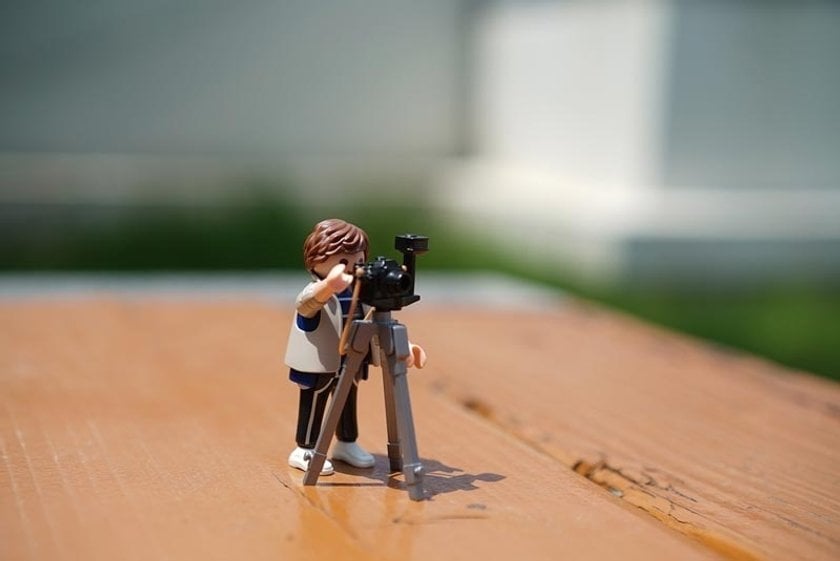How to Take Good Pictures
January 01
10 min. to read
Becoming a good photographer takes time and a lot of practice but eventually, you get the hang of it. If you’re reading this article and follow it religiously, you will see a drastic change in your photography skills almost immediately.
 Here is what you should do to capture those perfect shots:
Here is what you should do to capture those perfect shots:
Study the Area Surrounding Your Subject
Many novice photographers tend to forget how important it is to have a plain background for portrait photographs. Using a plain background, instead of a background with poles and cars for instance, will make the subject look more appealing to the eye. It also makes the photograph easy to scan and creates a nice texture around the person you’re shooting.
Focus on Your Subject’s Eyes
Focusing on the eyes of your subject can yield a very engaging photograph that also looks very realistic and natural. Holding the camera at your subject’s eye level can unleash the power of magnetic gazes and mesmerising smiles. It can leave your audience in awe when they see photographs that are shot keeping in mind the focus of the camera. It works, trust us!
Take Close up Shots
If you want your photographs to reveal intricate details about your subject and have him/her treasure memories of such moments, then take a photograph up close. In fact, it’s quite fitting to have your photograph zoomed in on the subject, which reveals the true beauty of your subject and gets any unnecessary “background noise” out of the way that might seem distracting.
However, you shouldn’t move in any closer than three feet, which can cause your photograph to be either blurry or generally frustrating to get the desired result. As a general rule of thumb, your goal should be to fill your photograph with the subject, but not to the extent that they are the only object in the frame.
Move Your Subject Away from the Middle
Although it seems like a no-brainer to keep the subject center-stage, it is often not considered the most viable option by many professional photographers. What’s recommended, however, is to move away your subject either left or right, depending on the background, that is. Keeping the subject away from the middle will truly allow the photo to come to life.
Lock the Focus First
Many beginner photographers take photos keeping the subject in the middle as it helps to better focus on the subject. However, what they don’t know is that the focus can be corrected once you know how to lock it on your subject.
Since many auto-focus cameras focus in the center of the picture, they aren’t ideal when you want to get the best shot possible. Here is how you can focus on your subject even if it's not in the middle:
- Center the subject
- Press and hold the shutter button halfway down
- Reposition your camera while holding the shutter button
- Take the perfect shot with crisp focus on your subject
Use Flash Outdoors
It is always recommended to use your camera flash when you’re shooting a subject outdoors ― especially when it’s a sunny day. This is because a bright sun creates deep facial shadows that can look unattractive and even creepy in some cases. To avoid that, either choose a fill flash mode or a full flash mode. A fill flash mode should be used when your subject is only at a distance of five feet. However, if the subject is beyond that distance, you may use full power flash mode which would cancel out those deep shadows perfectly.
Keep an Eye For Your Flash Range
Taking pictures beyond the flash range (when you’re using it) always result in generally poor-quality pictures. This is because pictures that are far away from the maximum flash range, will be took dark. Generally speaking, almost every camera has a fifteen feet flash range which is about five steps away. So whenever you have to use the flash, always keep in mind the flash range which would yield a better photograph every time.
You can always look up your camera’s flash range in the user’s manual but if you can’t find it then a good practice is to move away from the subject by at least ten feet. Of course, it’s not advisable to take close-up shots while keeping camera flashlight on. It’s also considered unprofessional. Use a reflector instead if you need to take shots up-close.
Take Shots in Soft Light
Every photographer should know that the most important part of a picture is lighting. It is the main factor that affects how your photo turns out. For example, if you want to take a shot of your grandfather in the bright sunlight, you’ll only make the wrinkles on his face or neck stand out more. Relatively, taking the same photo in soft lighting conditions would smooth out the wrinkles and won’t make them the center of attention!
The same can be said for landscape photography. If you want the perfect landscape photo that gets oohs and ahs from everyone, then take your shots ideally during sunrise or sunset ― when the light rakes right across the land.
Try to play with your ISO settings; adjust the exposure as you may need to soften natural light by applying shading to the place you’re photographing, and using reflectors as the source of light.
Opt for Vertical Pictures
Sometimes, it’s better to take your pictures vertically than horizontally. In fact, most professional photographers take vertical shots when they are shooting a subject or a tall lighthouse, for example. So the next time you shoot a person or tall structure, consider turning your camera sideways.
Be a Picture Director
Believe it or not but becoming a picture director has been proven to enhance your photographs even further. This is because you are not just a passive picture-taker; instead, you decide on where the photographs would be taken, add props that make the photograph even more lively and allows you to better shuffle people around for the perfect group shot. In other words, you’re the boss of how and where a picture is to be created, which gives you more freedom in capturing the perfect moment.
Final Words
While this will help you be a good photographer, in today’s era you will need to be tech-savvy to be perfect. Almost all photography you see is digitally touched. Tools like Luminar can help you correct balance issues and lighting to give you a perfect shots. Some tools, for example Luminar, have even more features that will help your shots stand out.





